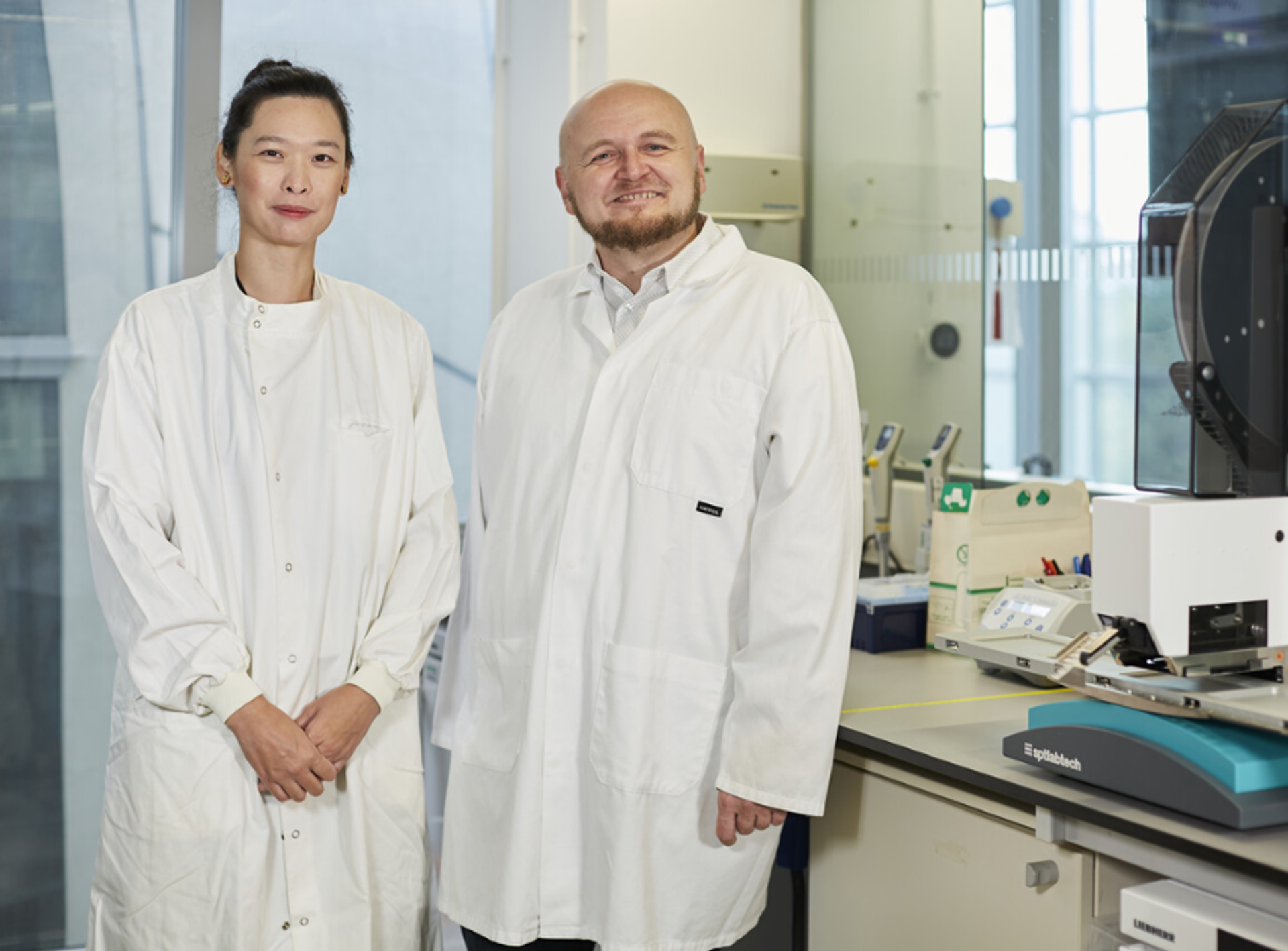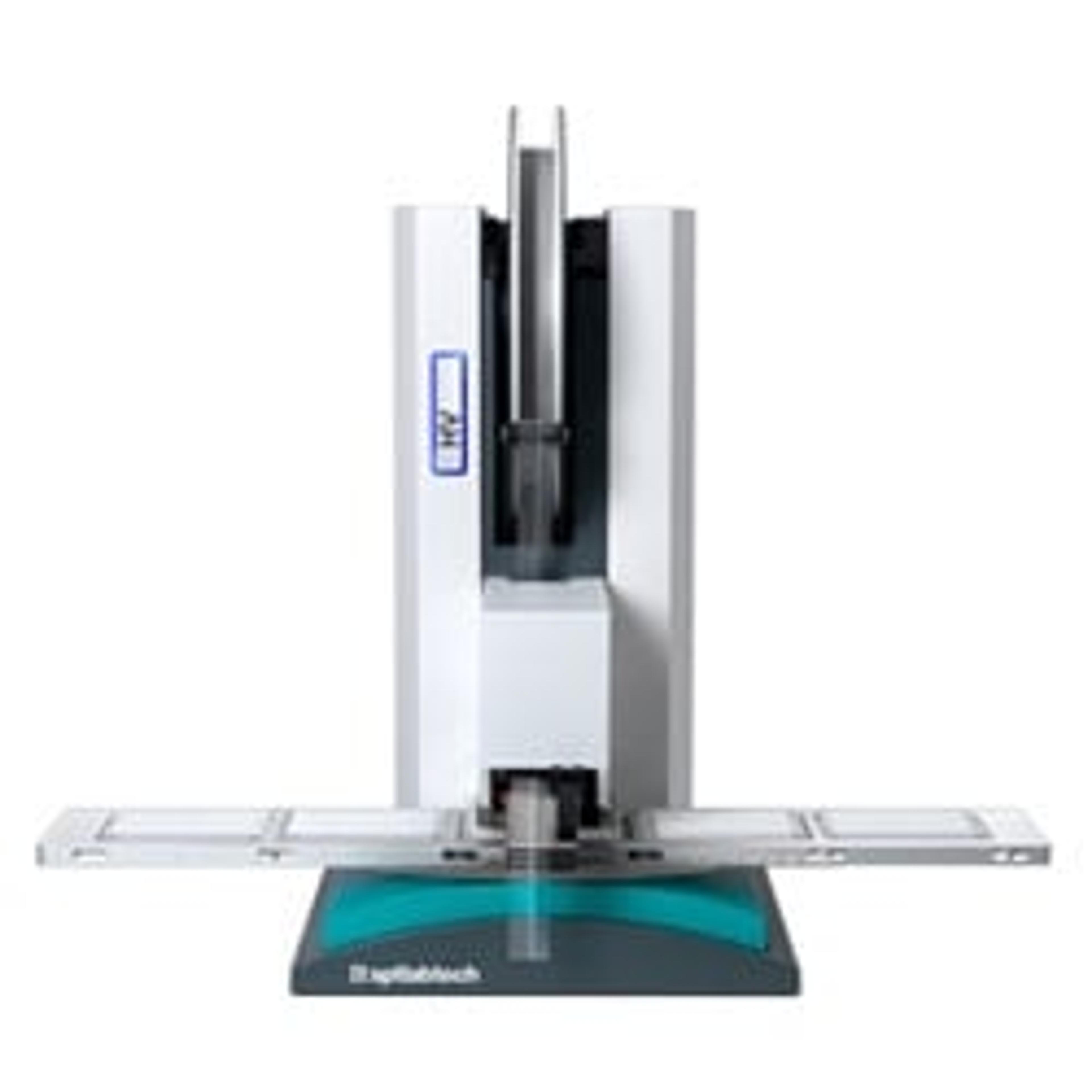London’s Natural History Museum transforms molecular research
Discover how experts at the London Natural History Museum are advancing molecular biology through cutting-edge automation and robotics
29 Sept 2025
Nestled within the esteemed Natural History Museum (NHM) in London, the NHM's Molecular Laboratories are at the forefront of scientific innovation. By integrating advanced automation and robotics, these labs are pushing the boundaries of research to analyze the genetic makeup of ancient species and modern ecosystems.
Yuen Ting Chan, Senior Automation Specialist and Molecular Biologist, and Dr. Piotr Cuber, Senior Molecular Biologist and Robotics Specialist, shed light on this groundbreaking work, highlighting their interdisciplinary approaches, bespoke sequencing services, and the unique challenges associated with working with historical and limited samples.

Yuen Ting Chan and Dr. Piotr Cuber from the Molecular Laboratories at the NHM in London
Integration of lab automation and robotics
The Molecular Laboratories at NHM are a core component of the museum's Science Innovation Platforms, which integrates imaging, analysis, and conservation labs into a cohesive research ecosystem. This platform primarily focuses on non-human biological research, particularly in taxonomy, evolution, biodiversity, and environmental conservation. As Cuber explains, "Science in the museum revolves around taxonomy, naming species, and placing them within the system tree of life to elucidate phylogenetics and evolutionary relationships. Our research also focuses on biodiversity and environmental protection."
At the heart of the NHM's molecular labs is their extensive use of automation technology, which is essential for handling the unique challenges of their research. Chan and Cuber work closely to automate key molecular biology pipelines, and ultimately increase efficiency and throughput.
"My role at the museum is to translate the manual protocols into automation protocols, which includes writing scripts and modifying protocols to fit the required automation platforms," Chan explains. This transition has been crucial in handling the museum's diverse and often challenging sample types, ranging from environmental DNA (eDNA) to degraded DNA from historic specimens.
Cuber complements this work by focusing on robotics and third-generation sequencing technologies. "I specialize in third-generation sequencing technologies and horizon scanning for potential new technologies that can enhance our scientific capabilities," he notes.
Innovative pipelines for unique challenges
The NHM molecular labs have developed three primary automated pipelines to address their diverse research needs:
- Metabarcoding for eDNA: This pipeline processes soil and/or water samples to assess biodiversity. Automation is crucial for handling the large volumes of samples required to generate significant environmental insights.
- Genome skimming: This method involves shallow sequencing to quickly confirm organism identity without the need for whole genome sequencing. The automation of this process allows for reduced reagent volumes, making it ideal for high-quality DNA samples.
- Historic DNA analysis: Perhaps the most challenging, this pipeline deals with highly degraded DNA from historic samples. To address these challenges, the team has adapted specialized protocols, such as the Santa Cruz method, for working with highly degraded DNA. This method is particularly effective for converting single-stranded DNA into next-generation sequencing (NGS) libraries, ensuring that even the most compromised samples can be analyzed with high accuracy.
The role of robotics and miniaturized liquid handling
These workflows are enhanced by automation technologies, including systems from SPT Labtech, which enable miniaturized liquid handling. This miniaturization is crucial in allowing the NHM lab to process large sample sets with reduced reagent volumes, maximizing both time and resources.
For example, by shrinking the reaction volumes used in the NEBNext® Ultra™ II FS DNA Library Kit, the team can scale up its work, potentially doubling or tripling the number of samples processed without compromising the data quality. This approach not only conserves valuable resources but also allows for the processing of large sample sets, which is particularly important in studies involving eDNA where sample size directly impacts the robustness of the results.
By reducing the volume of reagents used in each step, the lab can stretch its resources further, processing more samples with the same budget, thus enhancing the scope and impact of its research.
Challenges of working with historic and limited samples
Working with historic specimens presents significant challenges, particularly due to the DNA's limited availability, often degraded state, and potential for contamination. These factors can make it hard to obtain high-quality results. Traditional methods, which frequently involve the destruction of material, are not viable when dealing with rare or unique specimens.
"You can't just grind up a leg of a rare insect,” Chan explains. “When working with museum samples, we must be careful not to damage them." This necessitates the use of creative, non-destructive techniques and the development of highly specialized, adaptable protocols.
Similarly, samples from long-term environmental projects, such as soil biodiversity studies, cannot be revisited easily.
Collaborations and service provision
The NHM's molecular labs operate not only as an internal resource but also as a core facility for external collaborators. Depending on the needs of researchers, the labs offer a range of sequencing services, including Sanger sequencing, next-generation sequencing (NGS), and Oxford Nanopore Technologies (ONT). The flexibility of their services allows them to tailor workflows to the specific needs of each project, ensuring optimal results.
One of their notable projects, the Wilder Blean Project, exemplifies the lab's interdisciplinary approach. In collaboration with the Kent Wildlife and Wildwood Trusts, the project explores the use of European bison in the sustainable maintenance of forests. This innovative experiment, conducted in the ecologically significant West Blean and Thornden Woods near Canterbury, evaluates the impact of bison on soil biodiversity, providing insights into novel ecosystem management practices.

The flagship Wilder Blean project has a pioneering and innovative strategy to restore keystone species and ecosystem engineers to one of the largest areas of ancient woodland in the UK. © Wildwood Trust
A new era for NHM’s molecular science
The NHM molecular labs are poised for a transformative future marked by expansion and technological innovation. The planned development at Thames Valley Research Park will provide new and expanded facilities, including cutting-edge molecular labs and additional space for the museum's collections. This infrastructure will enable the integration of even more advanced automation technologies, significantly enhancing the labs' capacity for large-scale biodiversity and evolutionary studies.
As Chan and Cuber look to the future, they are passionate about the broader impact of their work. By leveraging automation and robotics, the NHM's molecular labs are not only advancing the field of molecular biology but also contributing valuable insights into how human activities affect the natural world. These advancements will allow the team to participate in larger projects, gather more comprehensive data, and make substantial contributions to the global effort to understand and preserve our planet's biodiversity.
Through their innovative pipelines, collaborative projects, and dedication to conservation, these labs are revolutionizing scientific research, ensuring that the NHM remains a cornerstone of scientific innovation and biodiversity research.


